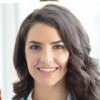Medical Advertising: Better When It's Native
 Today's patients are more tech-savvy than ever before, which means that they're even more likely to sniff out lazy marketing campaigns and toss them aside in one swift motion. Healthcare, especially mobile health, has advanced tremendously in the last year. Strangely however, most doctors are still very behind in terms of basic digital marketing and medical advertising.
Today's patients are more tech-savvy than ever before, which means that they're even more likely to sniff out lazy marketing campaigns and toss them aside in one swift motion. Healthcare, especially mobile health, has advanced tremendously in the last year. Strangely however, most doctors are still very behind in terms of basic digital marketing and medical advertising.
This is why a tool like native advertising is so powerful for doctors. It's an effective method to get new patients, but it isn't saturated or overdone yet. In recent months, Facebook and Twitter have redone their advertising on their desktop and mobile versions, making ads more seamless in the larger context of the user experience.
Things like sponsored stories, promoted Tweets, or featured videos on YouTube are less likely to detract from the user experience. What's even better is that content providers often take context into account, so if a user is browsing through medical related content, they're more likely to see your ad. It's like priming a patient to hear your message, which makes them much more likely to funnel into your waiting room.
It's pretty easy to set up as well, just sign up for a content provider's advertising service and remember to ask for anything related to "sponsored content" or "promoted content." Once you set up your ads and targeting, they'll be sent out to your desired audience for a regular cost-per-click fee.
Of course, like all types of advertising, there are wrong ways to go about native advertising. Make sure to take context into account, and try not to be too aggressive in your sales message. Finding the right touch in your marketing efforts is a science in itself, but as a medical professional, you should know how to approach all things - including medical advertising - with some finesse.




















